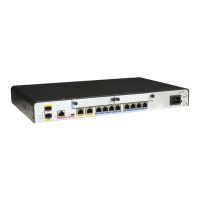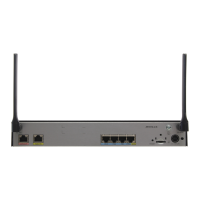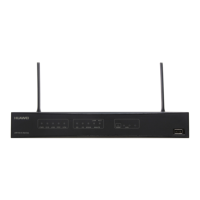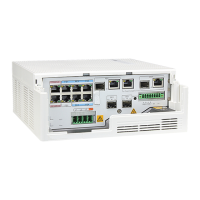Networking Requirements
In Figure 1-6, Router A, Router B, and Router C belong to the VPN backbone network and
OSPF runs between them.
GRE is enabled between Router A and Router C for the interworking between PC1 and PC2.
PC1 takes Router A as its default gateway, and PC2 takes Router C as its default gateway.
OSPF is enabled on the tunnel interface. OSPF process 1 is used for the VPN backbone network
and OSPF process 2 is used for user access.
Figure 1-6 Networking diagram of configuring a dynamic routing protocol for GRE
RouterA
RouterC
RouterB
Tunnel0/0/1
40.1.1.1/24
Tunnel0/0/1
40.1.1.2/24
10.2.1.1/24
10.1.1.1/24
GE2/0/0
10.1.1.2/24
GE1/0/0
20.1.1.1/24
GE1/0/0
20.1.1.2/24
GE1/0/0
30.1.1.2/24
GE2/0/0
30.1.1.1/24
GE2/0/0
10.2.1.2/24
OSPF 1
OSPF 2
PC1
PC2
Tunnel
Configuration Roadmap
The configuration roadmap is as follows:
1. Configure IGP on each router in the backbone network to realize the interworking between
these devices. Here OSPF process 1 is used.
2. Create the GRE tunnel between routers that are connected to PCs.Then routers can
communicate through the GRE runnel.
3. Configure the dynamic routing protocol on the network segments through which PCs access
the backbone network. Here OSPF process 2 is used.
Data Preparation
To complete the configuration, you need the following data:
l Source address and destination address of the GRE tunnel
Huawei AR1200 Series Enterprise Routers
Configuration Guide - VPN 1 GRE Configuration
Issue 01 (2012-04-20) Huawei Proprietary and Confidential
Copyright © Huawei Technologies Co., Ltd.
22

